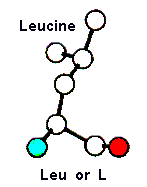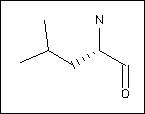

For an updated version of these pages, click here


Substitution preferences:
All protein types:
| Favoured | Ile ( 2) | Met ( 2) | Val ( 1) | |||||
| Neutral | Phe ( 0) | |||||||
| Disfavoured | Ala (-1) | Thr (-1) | Cys (-1) | Tyr (-1) | Ser (-2) | Arg (-2) | Trp (-2) | Lys (-2) |
| Gln (-2) | His (-3) | Pro (-3) | Asn (-3) | Glu (-3) | Asp (-4) | Gly (-4) |
| Favoured | Ile ( 2) | Met ( 2) | Val ( 1) | Phe ( 1) | ||||
| Neutral | Ala ( 0) | Cys ( 0) | Trp ( 0) | Tyr ( 0) | ||||
| Disfavoured | Thr (-1) | Arg (-1) | Lys (-1) | Gln (-1) | His (-1) | Pro (-2) | Asn (-2) | Ser (-2) |
| Glu (-2) | Gly (-3) | Asp (-3) |
| Favoured | Val ( 1) | Met ( 1) | Ile ( 1) | |||||
| Neutral | Ala ( 0) | Pro ( 0) | Phe ( 0) | Thr ( 0) | ||||
| Disfavoured | Ser (-1) | Tyr (-1) | Glu (-1) | His (-1) | Lys (-1) | Gln (-1) | Arg (-1) | Asn (-2) |
| Gly (-2) | Asp (-2) | Trp (-2) | Cys (-5) |
| Favoured | Met ( 1) | Ile ( 1) | Phe ( 1) | |||||
| Neutral | Val ( 0) | |||||||
| Disfavoured | Thr (-1) | Pro (-1) | Cys (-1) | Gln (-2) | Ala (-2) | Trp (-2) | Ser (-2) | Tyr (-3) |
| Arg (-3) | Gly (-4) | Lys (-4) | His (-4) | Asn (-4) | Asp (-5) | Glu (-5) |
Role in structure: Being hydrophobic, Leucine prefers to be buried in protein hydrophobic cores. It also shows a preference for being within alpha helices more so than in beta strands.
Role in function: The Leucine side chain is very non-reactive, and is thus rarely directly involved in protein function, though it can play a role in substrate recognition. In particular, hydrophobic amino acids can be involved in binding/recognition of hydrophobic ligands such as lipids.